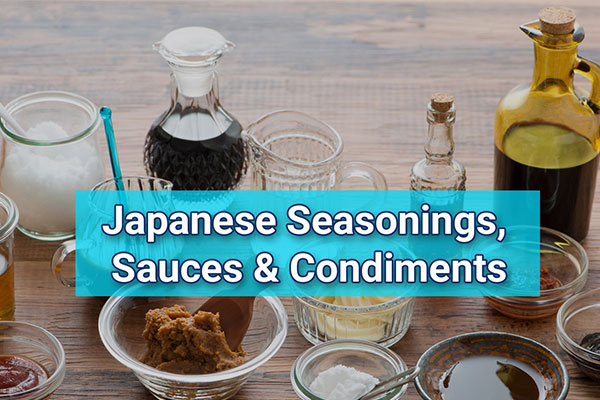Japan, as a country with extremely strict food safety standards, has equally strict requirements for imported spices.Knowing and complying with these requirements is a challenge that every spice exporter who wants to enter the Japanese market must face.This article will provide a comprehensive overviewExports to JapanGuidelines for spices, from regulators to regulatory standards, from conformity assessment to import procedures, help to easily address challenges.
Regulatory Authorities and Basicregulations
In Japan, the main bodies responsible for food safety include the Food Safety Commission (FSCJ), the Ministry of Health and Labour (MHLW) and the Ministry of Agricultural and Forestry Aquaculture (MAFF).
Regulatory regulations :
The Food Health Act:It stipulates the hygiene standards that food production, processing and sale must meet.
The Food Safety Basic Law:Provides a basic framework and policy guidance for food safety.
Public Protocol on Food Additives:There is a clear list of food additives and their use limits.
Food labelling law:Food labels must include detailed product information, including ingredients, additives and allergens.

II. Quality standards and requirements
Spices exported to Japan must not only comply with Japan’s food safety regulations, but also meet strict quality standards, especially with regard to food additives and mold toxins.
Limitation of food additives requirements:
Japan has clear limitation standards for certain additives such as sodium ethanol and D-tree sugar, while for ethanol and sulphur dioxide is more stringent than China.
Detailed differences between the standards for the two countries are needed to ensure that the spices exported fully meet the requirements of Japan.
Limitation of mold toxins requirements:
For vinegar, sauce, and baking sauce, Japan and China have limits on sulfur toxin, and Japan’s standards are often stricter.
JAS Certification and Import Procedures
Sales in the Japanese market require strict compliance with local regulations and standards, especially the JAS certification and import registration process.
The JAS certification:
Almost all agricultural and forestry products and their processed products sold in Japan must pass JAS certification and have a JAS certification label on their products.
(1) The application for certification:First, a producer or processor must submit a certification application to an authorized certification body. These certification bodies are located worldwide, including domestic and international bodies in Japan, and their primary task is to ensure that the applicants production activities strictly comply with the JAS requirements.
2) Production processing audit:After the application is submitted, the certification body will conduct a comprehensive and detailed audit of the applicants production and processing processes. This step is to verify whether their processes truly meet the standards set by JAS and ensure product quality and safety.
(3) The certification is obtained:Once the audit is passed, the manufacturer or processor can obtain JAS certification. This certification is an official recognition that their products meet Japanese agricultural standards and is a strong proof of the quality and safety of their products.
4) Product identification of products:JAS certified companies are entitled to use the JAS label on their products, which is an important sign that clearly conveys to consumers that products meet Japanese agricultural standards and helps to enhance consumer confidence in product quality and safety.
(5) The circulation of the market:Products with the JAS label can be freely circulated and sold in the Japanese market as well as in the international market.Consumers can choose and buy products that they consider to be of high quality and safe and reliable by recognizing the JAS label.
Requirements for labelling:
The product label must clearly indicate the food name, allergen, preservation method, consumption date, raw materials, additives, nutritional ingredients and energy, origin and other information.
Prophylaxis and recording:
All food imported to Japan must undergo sanitary inspection by the Ministry of Health and Labour and submit import records to the department.
1) The prior consultation:Before importing foodstuffs, importers must communicate with the sanitation department under the Ministry of Health and Labour to understand the specific inspection requirements and standards for imported foodstuffs.
Preparation of import declaration:Importers must prepare the import declaration form and all relevant documents, such as detailed descriptions of raw materials, ingredients, production methods, etc. In some cases, health certificates and self-examination results are also required.
3) Declaration of imports:When the goods arrive in Japan, the importer must submit a written import declaration form or make an electronic declaration through the online system.
(4) The inspection is carried out:The department will review the submitted declaration documents and decide whether further inspections are necessary based on the content of the documents and the actual situation of the goods.
5) Designation of examination:If inspection is necessary, the approved laboratory will designate the necessary inspection of the food.
Administrative inspection or monitoring inspection:For those goods which are deemed not to require inspection, administrative inspections or surveillance inspections will be carried out to ensure that they meet the prescribed standards.
(7) The inspection has decided:Based on the results of the inspection, the sanitation agency will decide whether to issue a declaration, which is a prerequisite for allowing the goods to enter the Japanese market.
Customs clearance of:Once the certificate is received, the customs will release the goods and allow them to enter the Japanese market for circulation.
9) Following processing of:If the goods have not passed the inspection, they will be handled in accordance with relevant regulations, which may include return, disposal or other use.
Understanding Japan’s requirements for imported spices is the key to successful exports. For exporters who want to succeed in the Japanese market, understanding and strict compliance with these requirements and procedures is essential.


 Follow customer service WeChat
Follow customer service WeChat